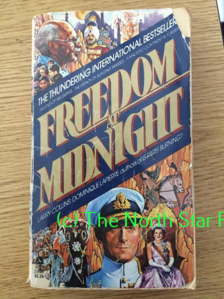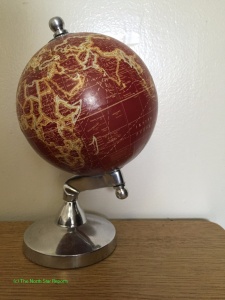Global Friendship, Love Across Borders – by Shivani Singh. The North Star Reports: Global Citizenship and Digital Literacy, at NorthStarReports.org and facebook.com/NorthStarReports
Welcome! Witaj! Enkua Dena Metachu! Mauya! Swagat Hai! Bienvenido! Laskavo Prosymo! And more warm greetings from new faces and cultures. A year ago when I first came to the United States, just like many of my fellow International students, there was a lot to process. It took a while to let this new culture and atmosphere sink in, but eventually we all got along. It’s crazy how unfamiliar faces become family, how strangers become support systems, how the discomfort of feeling out of place comes together to form a place of its own, and how International students become the ‘International squad’ in a matter of just a couple days.
I remember the first few days during orientation with students from Colombia, Canada, Ethiopia, India, Poland, Slovakia, Zimbabwe, and many other countries cramped up in a single room. The Director of International Programs – Alison Champeaux guided us through the basics and realities of living in a completely alien country (at least for most of us) and making the best out of it. I still remember how a year ago, there was uncertainty lingering in the back of our minds when all of us were trying to befriend and start a conversation with each other. Trying to figure out what was appropriate and what was bothersome, to not hurt anyone’s feelings but also try to woo them. It was all brand new. How we involuntarily hung out, planned things, took classes together and helped out each other. And within no time, between shady puns and lame jokes…a family emerged.
Today, when I sit with my roommates Yabi (Ethiopia), Basia (Poland), and Laura (Colombia) to look back and think about those times, a nostalgic smirk appears on all of our faces. How instantly our individual discomfort was creating a sense of comfort for us collectively, how our issues and queries were closely related and most of them were even similar. We all came in with distinct schedules, meal times, gestures, and understanding of relationships. For instance, back home for most of us, a professor-student relationship is extremely formal and doesn’t normally extend outside the classroom. One could hardly built a friendly and more than just an innate classroom connection with the professor. But here, in the USA, you can talk quite openly to your teachers and in addition to that you can (sometimes are even expected to) be on first name basis with most of your teachers and other elderly. A lot of social stigmas were different as compared to where we came from. The concept of ‘tipping’ was absolutely new to us all (me, Basia, Yabi, and Laura). The first time we went to eat dinner at Green Mill, and the check was put on our table, we were a little startled. But after a year of culturing ourselves in this new atmosphere, we have been able to embrace the differences with wide-open arms.
I, personally think that all International students go through a similar phase where they figure out what to inculcate and what to neglect, what to keep and what to push away. While we are trying to do this, we built ourselves in an all-around perspective. Meeting new people, making connections, soaking in the culture, and keeping each other company through thick and thin. Since the first time we (me and my roommates) made a connection as International students, we had each other’s back. We had a supernatural feeling about trusting each other; it was strange but significantly a grand feeling. What still blows my mind is that, how the four of us being from distinct countries, even continents (Asia, Africa, Europe, and South America) got along. We were used to a certain flavor of life, our liking for food and flavor, our habits, our sleep schedules, our customs, our rituals, our religions, our sense of styling, our definitions of beauty, every little thing was distinct. Somehow, this distinction acted like glue and we were stuck together! We got accustomed to each other, shared our beliefs, (being girls) we even shared our secrets. Introduced each other to our families over Skype, and our families to each other. It was quite overwhelming at first, to accept that the four of us connected in such short span and quick enough became so close that we could not go a day without talking, hanging out, or even humiliating one another. We even participated in each other’s cultural gatherings. I, as an Indian celebrated the festival of lights “Diwali” and was accompanied by lovely girls from around the world. We all dressed in Indian attires. I explained them the meaning and significance of this festival. And we ate mouth-watering Indian food. This was the situation when none of us even lived together. We would hang out in the lounge just to be within our comfort zone, which indeed we sought with each other. Recently, this year, the four of us we moved in together and it had been an absolute blast. We have cuisine from four different continents under one roof. We take turns cooking delicacies from our respective tastes. Not only do we share food and common beliefs, and sometimes end up disagreeing with one another, but also that doesn’t stop us from being goofy just the next second. It has almost been two months since we have been living together and all we have done is nothing but, alleviate each other and help improve in all possible ways. We are sisters, friends, companions, partners, sometimes; even therapists, tutors, cuddlers and so much more.
There is nothing more I could have wished for. Finding friends who would push you toward excellence, always encourage you, support every right thing you do, and even slap and drag you on to right track if you wander off. ‘Love is rare, but true friendship is even rarer’, and I am more than privileged to have this attachment with three beautiful girls. It is not just a second home anymore; it’s rather my newfound home. We solicit repose, contentment, ease, warmth, tenderness, and endearment with each other. The feeling of solidarity, belongingness and the level comfort we seek with each other is beyond the imaginable. I found my family among these fools.
—
Please contact Professor Liang if you wish to write for The North Star Reports — HLIANG (at) css.edu
See also, our Facebook page with curated news articles at http://www.facebook.com/NorthStarReports
–
The North Star Reports: Global Citizenship and Digital Literacy (http://NorthStarReports.org) is a student edited and student authored open access publication centered around the themes of global and historical connections. Our abiding philosophy is that those of us who are fortunate enough to receive an education and to travel our planet are ethically bound to share our knowledge with those who cannot afford to do so. Therefore, creating virtual and actual communities of learning between college and K-12 classes are integral to our mission. In three years we have published over 250 articles covering all habitable continents and a variety of topics ranging from history and politics, food and popular culture, to global inequities to complex identities. These articles are read by K-12 and college students. Our student editors and writers come from all parts of the campus, from Nursing to Biology, Physical Therapy to Business, and remarkably, many of our student editors and writers have long graduated from college. We also have writers and editors from other colleges and universities. In addition to our main site, we also curate a Facebook page dedicated to annotated news articles selected by our student editors (http://www.facebook.com/NorthStarReports). This is done by an all volunteer staff. We have a frugal cash budget, and we donate much of our time and talent to this project. The North Star Reports is sponsored and published by Professor Hong-Ming Liang, NSR Student Editors and Writers, The Department of History and Politics of The College of St. Scholastica, and the scholarly Middle Ground Journal. For a brief summary, please see the American Historical Association’s Perspectives on History, at: http://www.historians.org/perspectives/issues/2013/1305/Opening-The-Middle-Ground-Journal.cfm
Hong-Ming Liang, Ph.D., Editor-in-Chief and Publisher, The North Star Reports; Chief Editor, The Middle Ground Journal; Associate Professor of History and Politics, The College of St. Scholastica. Kathryn Marquis Hirsch, Managing Editor, The North Star Reports.
(c) 2012-present The North Star Reports: Global Citizenship and Digital Literacy http://NorthStarReports.org ISSN: 2377-908X The NSR is sponsored and published by Professor Hong-Ming Liang, NSR Student Editors and Writers, with generous support from The Department of History and Politics of The College of St. Scholastica, and the scholarly Middle Ground Journal. See Masthead for our not-for-profit educational open- access policy. K-12 teachers, if you are using these reports for your classes, please contact editor-in-chief Professor Liang at HLIANG (at) css.edu









